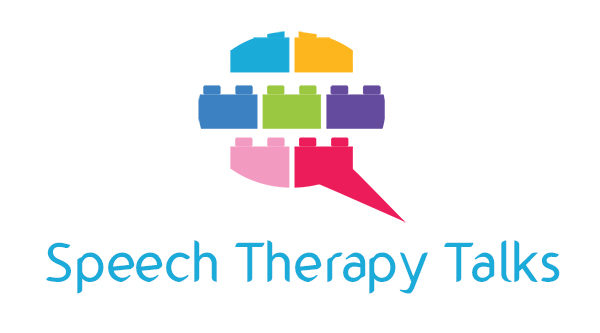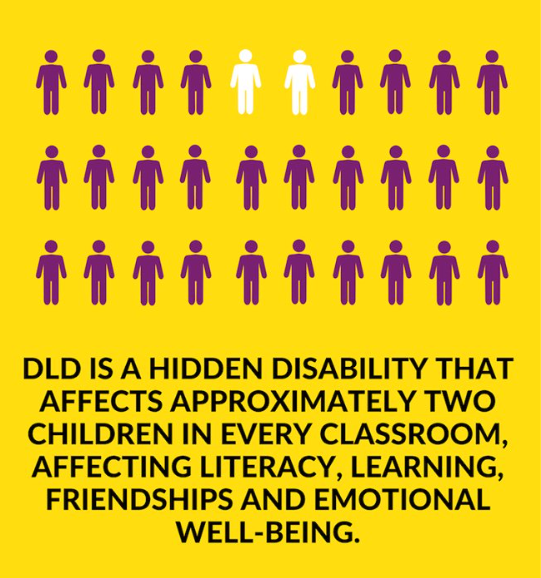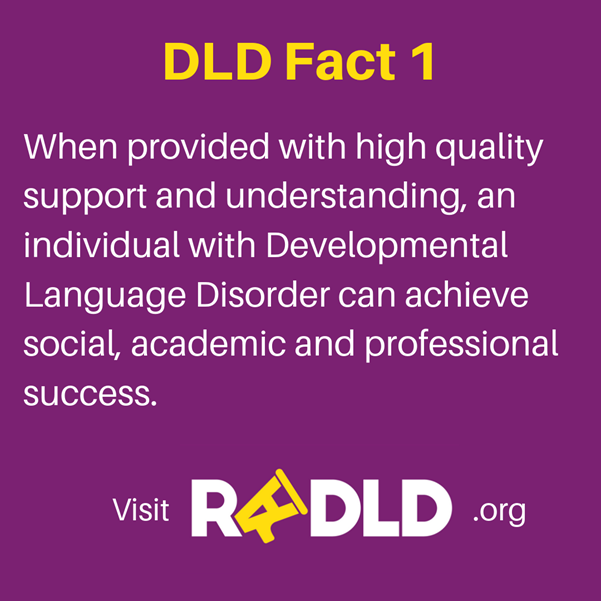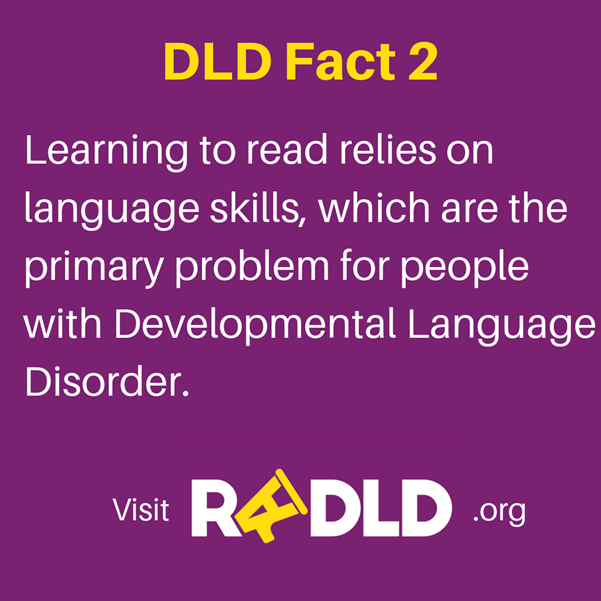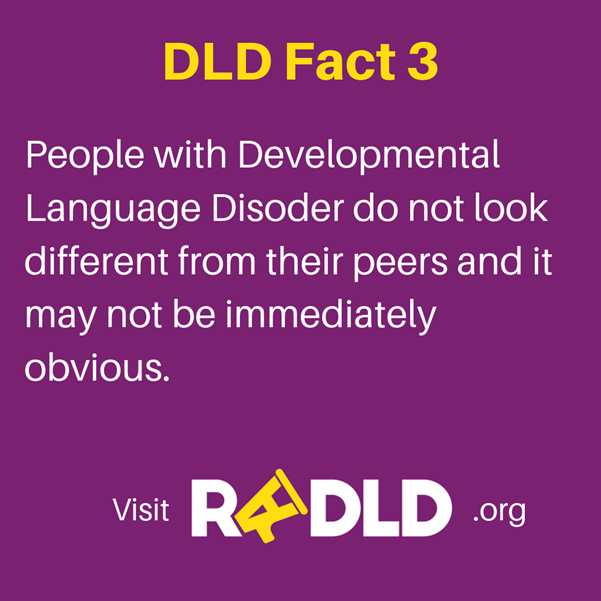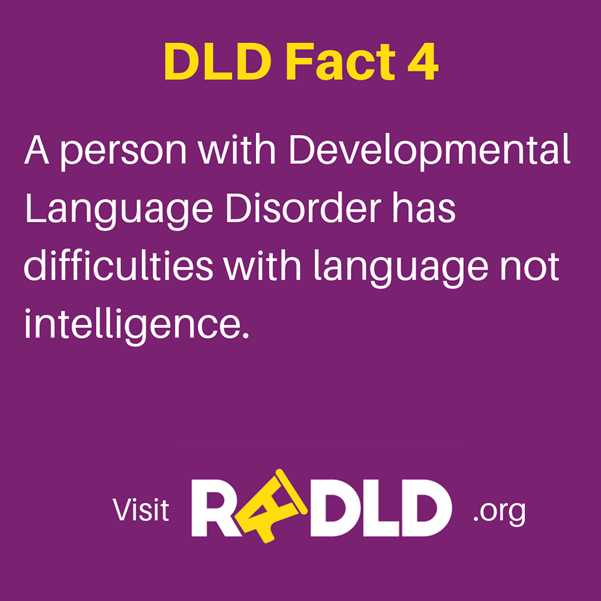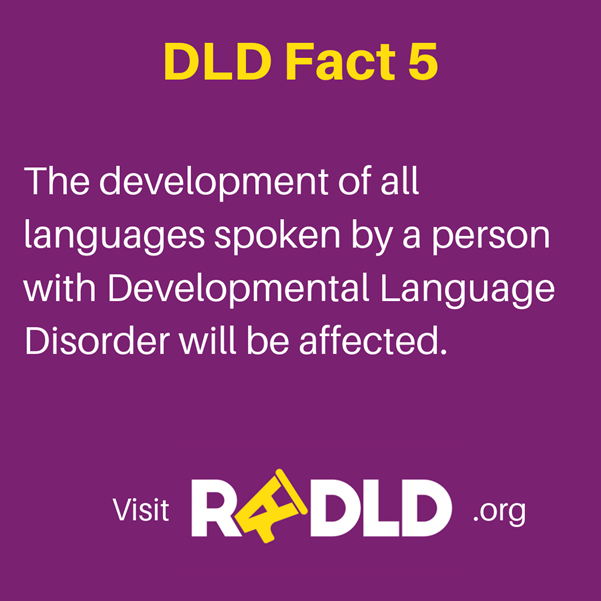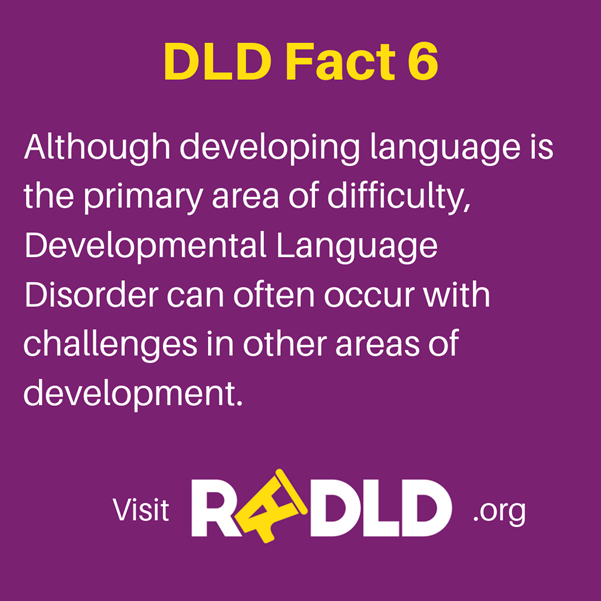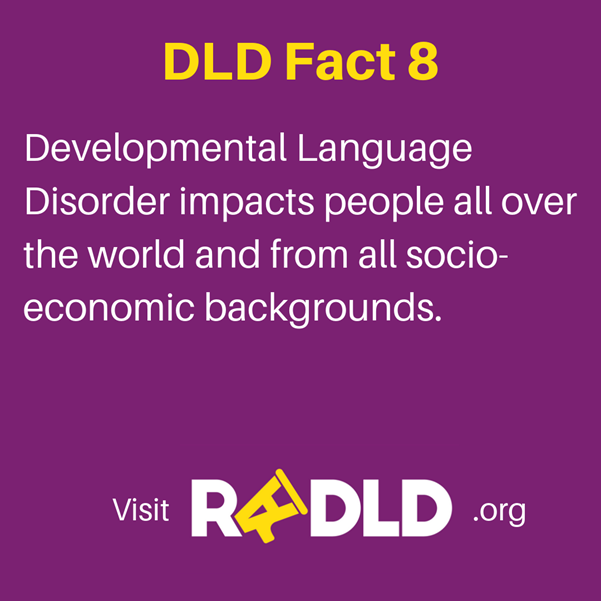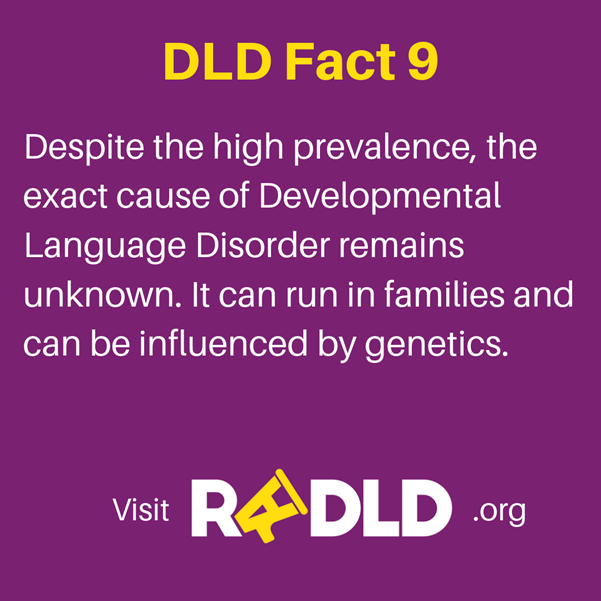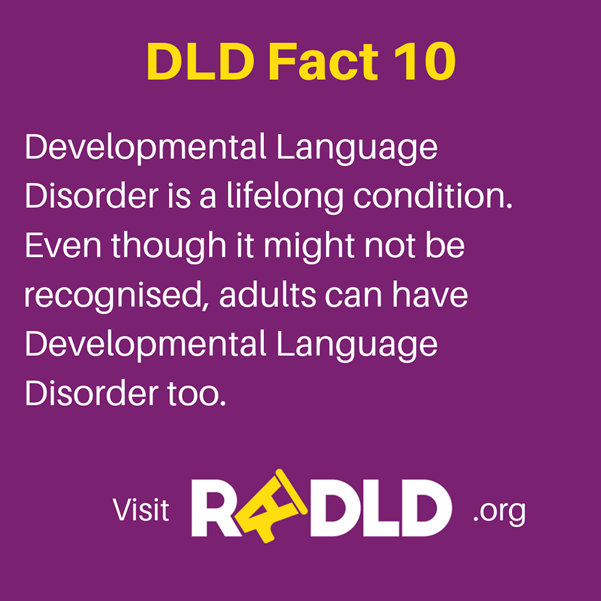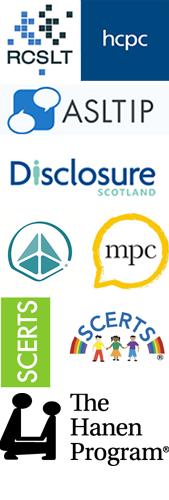-
What is Developmental Language Disorder?
-
Developmental Language Disorder (DLD) has been described as “the most prevalent special educational need that most teachers have never heard of.” @adibloom_tes.
It is It is simply known as persistent language difficulties that impact on all modes of language and is not associated with a known biomedical condition. [1] Although difficulties such as dyslexia can co-occur.
Its former name was Specific Language Impairment (SLI). According to research, around 7.5% of children begin school with a language disorder, which is likely DLD. [2].
A further 2.3% have a language disorder linked to another condition, such as dyslexia or autism. Thus in a class of 30 children, an average of two children will require therapy for their language difficulties.
-
-
Education and the Impact of DLD
-
• 88% do not make academic progress at school [3]
• Profound difficulties with learning to read [4] and learning mathematic concepts
• Many mislabelled as having behavioural difficulties due to unidentified DLD [5]
• Higher risk of being bullied [6] and of not reporting bullying [7]
• Difficulties in peer interactions [8]“Learning floats on a sea of words”
It is therefore essential to ensure language needs are facilities in classrooms.
Classroom Strategies:
- Allow processing time for receptive/expressive language – encourage pupils to ask
for thinking time. - Chunk information in small components (both written and verbal). Accompany
verbal instruction with written to back it up. Use colour coding, concept maps,
diagrams and graphs where possible. - Relate concepts to child’s own experiences where possible.
- Reduce the amount of assessment – set fewer tasks that are visually simple.
- Create a partnerships with your student – reflect on what works and doesn’t – this
will need regular adjusting. - Think about reducing cognitive load (e.g. overpowering wall displays, background
chatter, seating) - Consider a dictating app.
- Teach topic vocab but also generic vocabulary that will help across subjects (e.g.
evaporation covers science, geography, food technology)
- Allow processing time for receptive/expressive language – encourage pupils to ask
-
- %
In Youth Justice system have DLD and are twice as likely to reoffend
Winstanley et al (2020) - %
Of children begin school with a language disorder
RADLD - %
Of children with DLD do not make academic progress in school
Norbury et al (2016)
-
Signs of DLD
1–2 years: no babbling, not responding to speech/sounds, no interaction.
2–3 years: minimal interaction, no display of intention to communicate, no words, minimal reaction to spoken language, regression or stalling of language development.
3–4 years: at best joining 2 words, not understanding simple instructions, close relatives cannot understand much of child’s speech. [9]
5 years – If language difficulties persist at school age they are likely to be due to DLD
-
1 RADLD (2021)
2 Norbury et al (2016)
3 (Norbury et al, 2016)
4 Conti-Ramsden et al, 2016).
5 Conti-Ramsden and Botting, 2008).
6 Knox and Conti-Ramsden, 2003
7 RCSLT, 2020
8 St Clair et al, 2011
9 Ebbels, S. et al (2019) Evidence-based pathways to intervention for children with language disorders Language and Communication Disorders (54) 13-19
